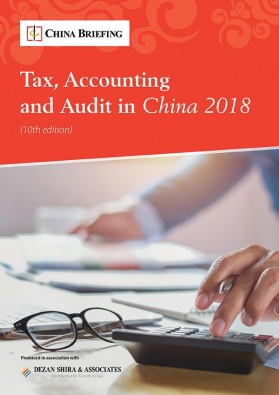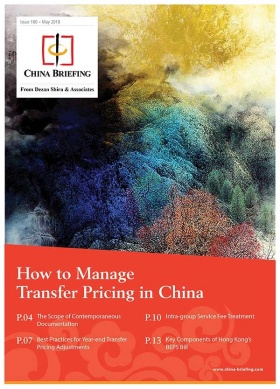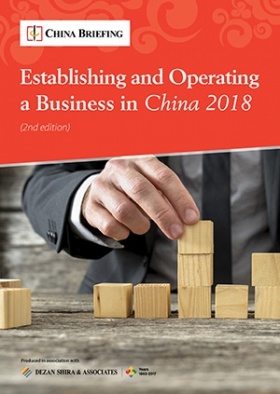Tax Deregistration in China: New Rules Simplify Process
On September 18, China’s State Administration of Taxation (SAT) issued the Circular about Further Optimizing Tax Deregistration Procedures for Enterprises (Shui Zong Fa [2018] No. 149) to further improve its business environment.
The notice introduces tax clearance certificate exemption, optimizes the tax deregistration service, and simplifies the documentation required and procedure for tax deregistration.
This article outlines the new measures, which came into effect on October 1.
Tax clearance certificate exemption service
Taxpayers who apply for the simplified deregistration process and meet one of the following circumstances will be exempted from tax clearance by the tax authorities:
- Those who have never handled tax-related matters with the tax bureau; and
- Those who have handled tax-related matters, but have never applied to issue invoices, and have no outstanding tax (including overdue fine) and penalties.
These taxpayers can directly apply to the local branch of the State Administration for Market Regulation (SAMR) for business deregistration, without getting a tax clearance certificate from the tax bureau in advance.
Optimization of tax deregistration service
Taxpayers who have applied for the general deregistration process with their local SAMR in charge will still need to go through the tax deregistration process. However, they can enjoy optimized service by meeting the following circumstances:
- Taxpayers are under no tax investigation.
- Taxpayers have no outstanding tax (including overdue fines) and other penalties.
- Taxpayers have handed in the special VAT invoices and VAT invoices machine for cancelation.
- Taxpayers are in one of the following situations:
- Taxpayers with class-A or class-B tax credit rating;
- Taxpayers with class-M tax credit rating whose parent company has a class-A tax credit rating;
- Enterprises whose founders are talents introduced by a provincial government or recognized by industrial associations above the provincial level;
- Individual businesses that are not included in the evaluation of tax credit rating and make regular tax payments of fixed amounts; and
- Taxpayers who have not reached the ‘VAT payment threshold’ (see last section for more information).
These taxpayers enjoy a more efficient tax deregistration process, which could possibly be closed on site. Besides, they can deal with relevant matters by making a “commitment”.
If there is information missing during the process of tax deregistration, these taxpayers can still enjoy the accelerated tax deregistration process and get the appropriate clearance documents by making a commitment of re-submitting the complete information required within a specified time limit.
If the commitment is not fulfilled, the tax authorities will categorize the applicant’s legal representatives and financial managers in class-D tax credit rating.
Simplification of documentation and procedures
The tax bureaus will facilitate and optimize the tax deregistration process through the following measures:
- Simplify the information: Taxpayers who have conducted real name authentication are exempted from providing tax registration certificates and personal identification documents.
- Open a special window: A special service window for tax deregistration will be set up in the tax authorities and adjust the number of these windows according to the situation.
- Offer a ‘combo’ service: Integrate the pre-approval items for tax deregistration, plus the service of acceptance at one window, internal circulation, completion of handling tax-related affairs within a prescribed time limit, and window delivery.
- Strengthen the ‘first asking duty system’ and ‘one-off notification’: When the taxpayer goes to the tax authorities to handle tax deregistration, the tax collector approached first is responsible for asking the situation, distinguishing the matters and complexity, classifying the relevant notice that needs to be handled, communication and counseling.
- Optimize internal work and duties: It is necessary to innovate working methods, simplify the process, have division of labor, achieve interconnectedness, and handle within a time limit.
What is the VAT payment threshold?
Generally, individual taxpayers (excluding individually-owned businesses registered as general taxpayers) shall be exempted from VAT where the sales amount has not reached the threshold, which is stipulated as follows:
- The monthly sales amount is from RMB 5,000 to RMB 20,000 (both inclusive) in the case of tax payment at regular intervals; and
- The sales amount per transaction (per day) is from RMB 300 to RMB 500 (both inclusive) in the case of tax payment for each transaction.
To support the development of small and micro enterprises, the SAT provides a preferential VAT exemption policy valid until December 31, 2020. According to this policy:
- VAT small-scale taxpayers shall compute their sales separately for sale of goods or provision of processing, repair, and assembly services, and for sale of services and intangible assets; and
- VAT small-scale taxpayers will be exempted from VAT where their monthly sales of goods or provision of processing, repair, and assembly services does not exceed RMB 30,000 (or RMB 90,000 for taxpayers who pay tax quarterly), and where monthly sales of services and intangible assets does not exceed RMB 30,000 (RMB 90,000 for taxpayers who pay tax quarterly), respectively.
About Us
China Briefing is produced by Dezan Shira & Associates. The firm assists foreign investors throughout Asia and maintains offices in China, Hong Kong, Indonesia, Singapore, Russia, and Vietnam. Please contact info@dezshira.com or visit our website at www.dezshira.com.
- Previous Article China’s FDI Policy: Wider Market Access, Regional Incentives Announced
- Next Article China’s New State Administration for Market Regulation









